A Numerical Method for 1-D Parabolic Equation with Nonlocal Boundary Conditions
Abstract
This paper is concerned with a local method for the solution of one-dimensional parabolic equation with nonlocal boundary conditions. The method uses a coordinate transformation. After the coordinate transformation, it is then possible to obtain exact solutions for the resulting equations in terms of the local variables. These exact solutions are in terms of constants of integration that are unknown. By imposing the given boundary conditions and smoothness requirements for the solution, it is possible to furnish a set of linearly independent conditions that can be used to solve for the constants of integration. A number of examples are used to study the applicability of the method. In particular, three nonlinear problems are used to show the novelty of the method.
1. Introduction
In this paper we consider a numerical method for 1-D heat conduction problems with nonlocal boundary conditions. Such problems appear very naturally in a number of physical systems including heat conduction [1], elastic deformation of thermoelastic rods [2, 3], chemical reactions [4, 5], population dynamics [6], and petroleum exploration [7]. A recent review of problems with nonlocal boundary conditions can also be found in [8] and references therein. Traditional finite difference methods have been shown to have problems in accuracy [9]; therefore, a number of investigators have developed various numerical methods for the above problem. Recent results include methods based on θ-based finite difference [10], reproducing kernel space [11], and Adomian expansion [12].
The purpose of this paper is to apply a method based on local coordinates. We have developed this method for the solution of a Stefan problem [13]. The algorithm transforms the working equations onto a local coordinate system. It is then possible to write down an exact solution which is valid and can be used within a small local region. The procedure leads to an implicit scheme that is first order accurate in time. However, the accuracy in time can be easily improved. The novelty of the method is in the fact that it can obtain exact solutions in space based on local coordinates. In addition, the algorithm can be applied to a large class of nonlinear problems. The formulation provides a natural way to obtain a numerical solution to the problem without any iterations which is often the case using the existing methods. The present method can provide an effective way to numerically investigate the behavior of linear and nonlinear singular parabolic equations with nonlocal source terms that lead to blowup [14, 15].
Section 2 introduces the method in detail for a 1-D parabolic problem. Section 3 studies the stability of the method and the invertibility of the coefficient matrix. Section 4 uses a number of examples to investigate the applicability of the method and compares the results to exact solutions. In particular, three nonlinear problems are studied. The last two nonlinear problems are used to show the novelty of the present method.
2. A numerical Method Based on Local Coordinates
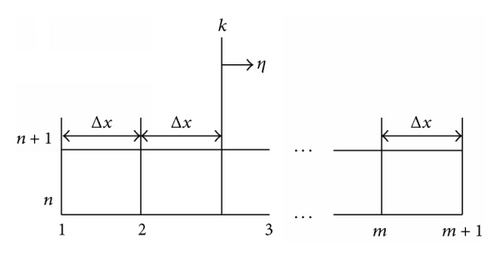
- (i)
The temperature distribution at t(n+1) = (n + 1)Δt should be continuous. We can impose this condition at mid-points between nodes. It leads to
() - (ii)
The flux at t(n+1) should be continuous. In the present case, it follows that the temperature at t(n+1) should have a continuous first derivative. We can also impose this condition at mid-points between nodes. It leads to
()
3. Analysis of the Method
Note that, for the case where the kernels in the boundary conditions, ϕ(x), ψ(x), are not constants, the matrix Γ11 remains the same, that is, (det(Γ11) ≠ 0), and one needs to only check the Θ2 in (20).
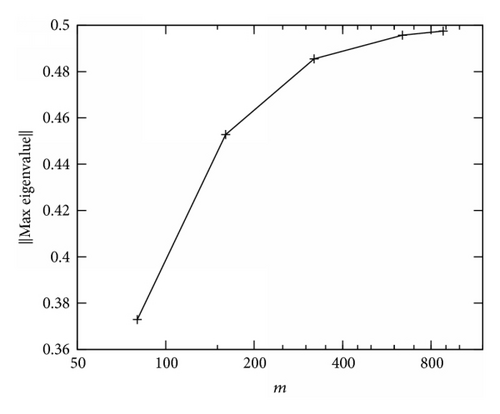
4. Numerical Examples
Example 1. Consider the heat conduction given by (1) and (2) where
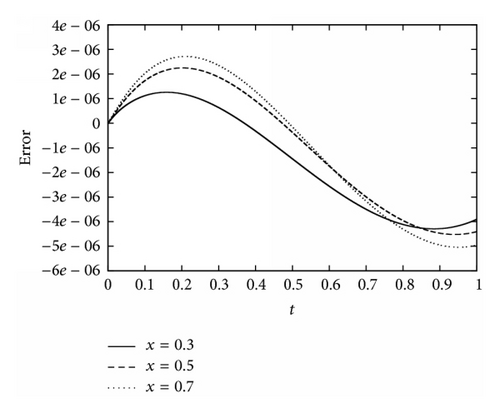
Example 2. Consider the heat conduction given by (1) and (2) where
We next apply the present method to three nonlinear problems with nonlocal conditions.
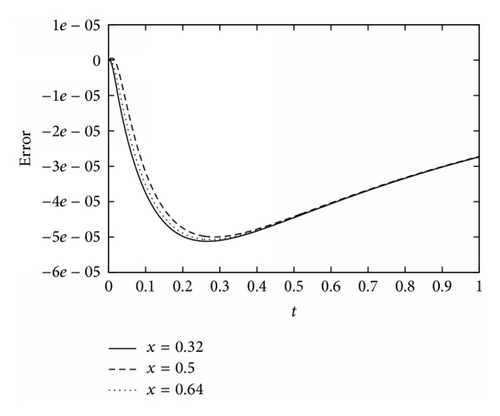
Example 3. Consider the parabolic system given by
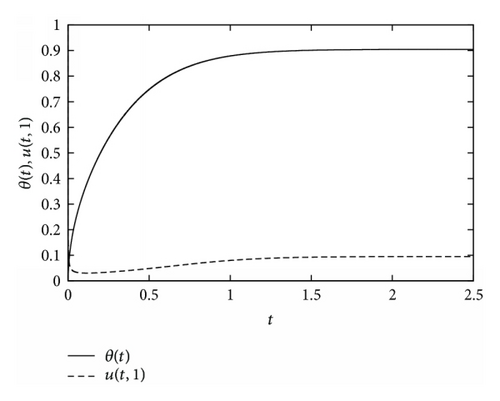
Example 4. Consider the reaction-diffusion system given by [17]
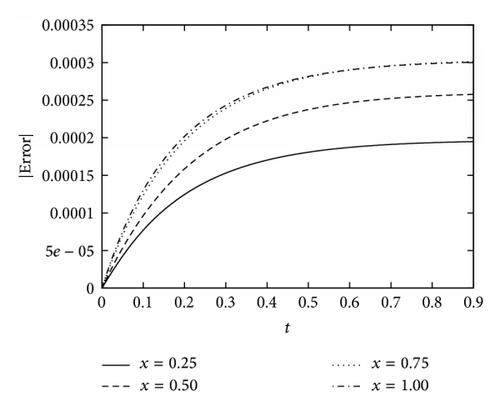
Example 5. Consider the reaction-diffusion system given by [18]
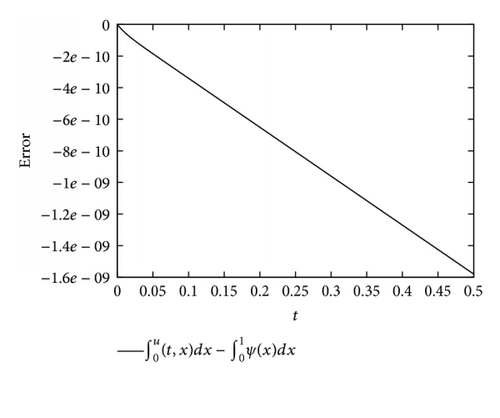
5. Conclusion
In this paper we presented a local method for obtaining the solution for 1-D parabolic problems with nonlocal boundary conditions. The method is first order accurate in time. However, the solution is locally exact in the space dimension. The order of accuracy in time can easily be improved to second order. Five numerical examples were used to study the applicability of the method. In particular, three nonlinear problems were studied to show the strength of the method.
Conflict of Interests
The authors declare that there is no conflict of interests regarding the publication of this paper.




